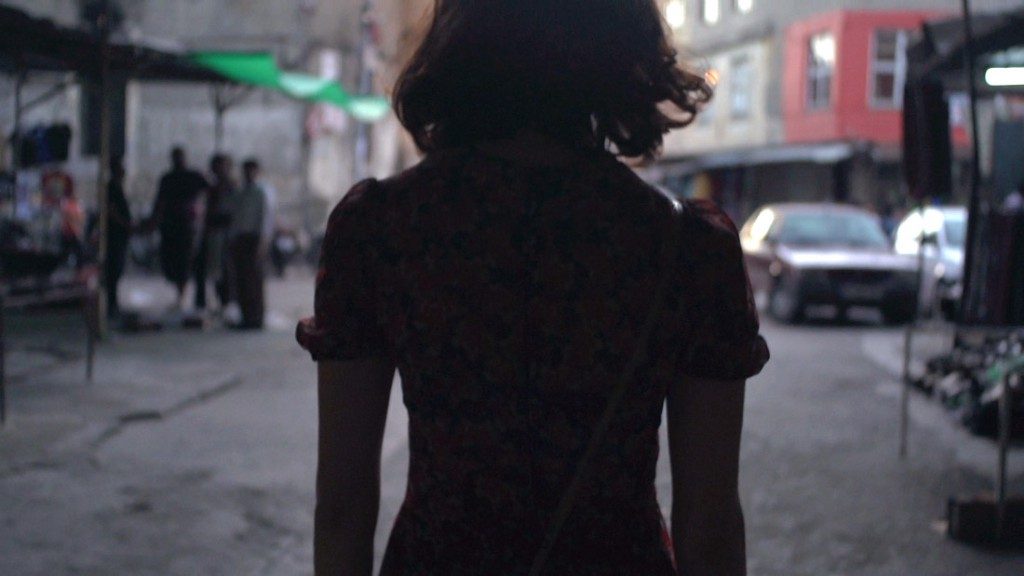Sophie Deraspe fell into cinema through visual arts and literature. As both a director and a cinematographer, she worked mostly in documentary before directing her realism-bending first feature length film, Missing Victor Pellerin (2006). Followed by critical acclaim and projections throughout the world, Deraspe’s realistic work continued with her second feature film, Vital Signs (2009), which premiered in Rotterdam and won 15 prizes around the world. She has completed her third narrative feature, The Wolves. (Press materials).
The nonfiction The Amina Profile will premiere at the 2015 Sundance Film Festival on January 24.
W&H: Please give us a description of the film playing.
SD: Amina Arraf, an attractive Syrian woman, a lesbian, and a revolutionary, is engaged in an online love affair with Sandra Bagaria, a young Montreal professional, just before launching a blog provocatively titled “A Gay Girl in Damascus.” When Amina is kidnapped, Sandra is drawn into a web of international intrigue involving American intelligence agencies, some of the most important media outlets in the world, and a huge number of activists and Syrian revolution sympathizers.
This is a story that could only happen in our time, in the era of Facebook and virtual relationships — a story that became international in scope and played out in the slippery terrain of a nation in a state of war. A love story, above all, but also the story of an unprecedented media and sociological fiasco.
W&H: What drew you to this story?
SD: I personally knew Sandra Bagaria. I knew right from the beginning that what she was living through was the subject of a great story, but she was so deeply betrayed and exposed by the media at that time that I couldn’t ask her to make a film out of it. But she came to me one evening, offering me this magnificent gift of a carte blanche to turn what she had been through into something creative.
At that time, I felt the story hadn’t completely unfolded, but I never expected it would go this far when I set out on a journey around the world with Sandra to meet with the key people involved in the story.
W&H: What was the biggest challenge in making the film?
SD: The Amina Profile documents a huge fantasy that was propagated mainly online. All of it being virtual, I had to find my own “language” for the film. Though I avoided actual re-enactments, I played with fictional codes a lot. I had to present the facts of what is truly a thriller, and at the same time I wanted the viewer to dive into the lesbian eroticism, the making of a revolution, and the ingredients for the success of the “Gay Girl in Damascus” blog. It is only when the fantasy is shared that the brutal reality can be faced.
W&H: What do you want people to think about when they are leaving the theatre?
SD: We are all impacted by the issues exposed in this film, either while searching for reliable information or for personal connections through social media. With all these new technological tools, all the small and big media outlets, all the possibilities for intimacy, how do we keep our head above the lies, mistakes, negligence, idiotic farces, and distorted desires circulating out there? Sandra showed a great amount of courage by traveling the globe to face reality, and therefore regaining power over her own story.
W&H: What advice do you have for other female directors?
SD: Go for it. Trust yourself. Work hard. It is possible, even while pursuing other life goals, like having a family. Surround yourself with positive people.
W&H: What is the biggest about you and your work?
SD: Misconception? I’ve never thought about that. I focus on my work, ignoring the tremendous amount of time and perseverance it takes, and trying to be as true and sincere to the subject matter and to my reading of it as possible.
W&H: How did you get your film funded? Share some insights into how you got the film made.
SD: I have the fortune of living in Quebec, Canada, a state that supports its culture and artists. Therefore, we have access to grants and investments from different government organizations. I am not saying it is easy, since a lot of projects apply for funding, but at least we know that not only the business side of movie making counts, but also the importance of a subject and the vision with which it is treated. I think the recent success of Quebecois films and filmmakers around the world show how beneficial this approach is.
W&H: Name your favorite woman-directed film and why.
SD: Always tough to pick ONE film. I’ll go with Andrea Arnold’s Fish Tank (2009). It’s bold, raw, sensitive, beautifully shot with amazing performances, and full of life in all its shades, with its crude words and untold fantasies. A drama that doesn’t refrain from descending into the depths before opening itself up to the prospect of some hope, while always sticking to the truth of the characters.






